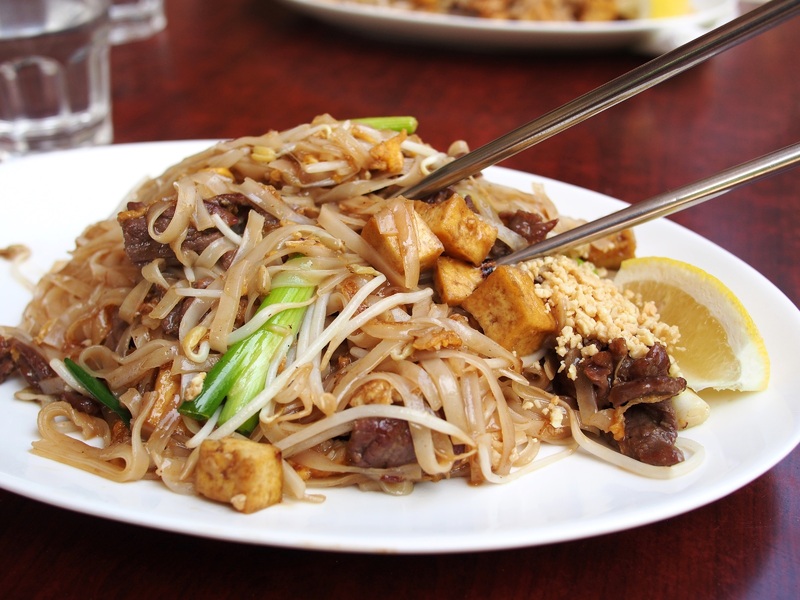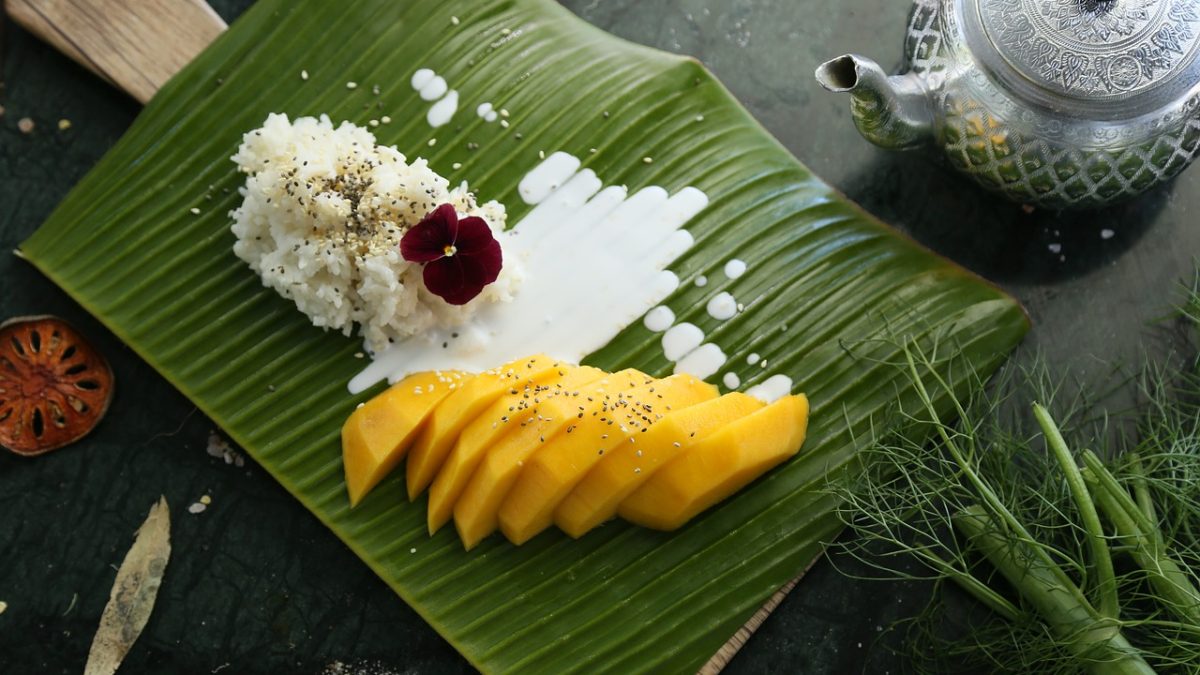Exploring Thailand’s Irresistible Street Food Delights
A Culinary Journey
Thai street food offers a delectable combination of spicy, sweet and savoury in its street dishes, snacks, mains and desserts, with plenty of delectable options to choose from as you wander through the hawker centres and street food stalls. If you’re new to the Thai culinary scene and aren’t sure where to begin, here are some of the most popular Thai street food delights for you to try.
Phad Thai
Thai food is pretty much synonymous with Phad Thai, a dish which can be found in any of the restaurants in Koh Samui. It is a serving of stir-fried noodles flavoured with garlic, chilli, fish sauce, tamarind pulp and shallots. The dish is famous for its heavenly balance of sweet and salty flavours with its signature serving of roasted peanuts and other ingredients like bean sprouts and Thai basil.

Mango with Sticky Rice
This is one of the more popular sweet rice dishes in Thailand. It features a base of glutinous sweetened rice alongside freshly cut mango and a drizzle of coconut cream syrup or coconut milk. This delectable sweet dish is a popular delight and can be found in many food stalls as well as restaurants and hotels like Avani Chaweng Samui Hotel & Beach Club.
Gaeng Keow Wan Gai
Simply known as Green Curry, this is one of the spiciest dishes you can find in Thailand and is perfect if you’re looking for a fiery burst of flavour. Its green colour is due to the abundance of green chillies which is the main focus of the dish. It also includes other ingredients like shallots, lemongrass, Thai basil, kaffir lime, galangal, eggplant, potatoes and chicken slices.
Jim Jum
This is a steaming, fragrant broth often served in a clay pot for one or two people. It is usually a chicken or pork broth served with an assortment of vegetables, chicken, pork or seafood and a number of fresh herbs like sweet basil, lemongrass, galangal, kaffir leaves and more. It is also often accompanied by a serving of spicy sauce to dip the meats and vegetables in.
Thai Coconut Custard
This is a traditional Thai dessert served in a tiny porcelain cup or bowl. It has two layers – a chewy sweet coconut-based milk layer as a base with a thick coconut cream layer on the top. There are several variations of the dessert that feature differently coloured base layers. Traditionally the base layer is a light brown, owing to the coconut sugar or jaggery used. Other variants may feature a green base made from Pandan leaves or a light blue derived from the butterfly pea flower.
Related posts
Archives
Categories
- Appetizers (26)
- Arab (48)
- Bars (35)
- Burmese (6)
- Café (26)
- Casual Dining (38)
- Chinese (37)
- Coffee House (29)
- Desserts (38)
- Destination Dining (386)
- Diner (28)
- Family Restaurants (71)
- Fast Food (65)
- Fine Dining (524)
- Food Facts (224)
- Healthy Food (108)
- Hong Kong (10)
- Indonesian (15)
- Italian (2)
- Japanese (17)
- Main Dishes (63)
- Maldivian (73)
- Miscellaneous (8)
- Miscellaneous Topics (395)
- Palate (68)
- Recipes (95)
- Restaurants (206)
- Sea Food (99)
- Singaporean (34)
- Sri Lankan (62)
- Steaks & Grill (70)
- Street Food Stalls (152)
- Thai (94)
- Types of Cuisines (120)
- Vegan (63)
- Vegetarian (10)
- Vegeterian (39)
- Vietnamese (22)
- Western (11)

